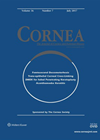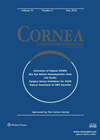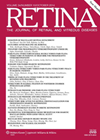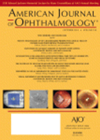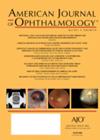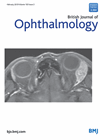You searched for "phacoemulsification"
Light in darkness – manual small incision cataract surgery in India
Cataract has been documented to be the most significant cause of bilateral blindness in India, where vision <20/200 in the better eye on presentation is defined as blindness [1,2]. Estimation of blindness in India by the World Health Organization (WHO)...Sustainability in eyecare: Aravind Eye Hospital’s low carbon eyecare system
4 August 2021
| Rengaraj Venkatesh, Aakriti Garg Shukla
|
EYE - Cataract, EYE - Refractive, EYE - General
The field of healthcare has a substantial impact on the environment as it is responsible for 5-10% of greenhouse gas emissions and 9% of air pollutant generation [1]. Surgery is associated with the rapid consumption of single-use products and waste...
ESASO Course Series (Volume 3): Cataract
This book is designed as a course manual for cataract and refractive surgery. It starts off by discussing both the fluidics and dynamics of phacoemulsification, touching techniques and management of difficult scenarios. The ins and outs of conventional, accommodative, toric...Femto-DMEK – a solution for high re-bubbling rates?
This retrospective study examined results of patients that underwent femtosecond laser enabled descemet membrane endothelial keratoplasty (DMEK) (FE-DMEK) and manual DMEK (M-DMEK) for Fuch’s endothelial dystrophy. In FE-DMEK femtosecond laser was used to create 8.25mm descemetorhexis, whereas during M-DMEK- descemetorhexis...DSEK – five year results
This UK based study examined long-term descemet stripping endothelial keratoplasty (DSEK) results, looking at graft survival and endothelial cell losses. Data on 210 grafts were included in analysis. Most frequent indication for DSEK was Fuch’s endothelial dystrophy (81.4%) and 46.3%...Timing of vitrectomy for retained lens fragments
1 February 2015
| Saruban Pasu
|
EYE - Vitreo-Retinal
The purpose of this study was to compare the results of same setting vitrectomy with delayed vitrectomy for retained lens fragments following cataract surgery. Same setting vitrectomy was defined as the patient not leaving the operating table following cataract surgery....
Outcomes of cataract surgery in patients with uveitis
This is a systematic, evidence-based literature review and meta-analysis, looking at the visual outcomes (vision 20/40 or better) of cataract surgery in uveitic eyes. The authors searched MEDLINE, EMBASE, CINHAL and CENTRAL, including English language and human studies only. They...Cataract surgery in patients with retinitis pigmentosa
Retinitis pigmentosa (RP) is the commonest inherited cause of retinal degeneration. Posterior subcapsular cataract (PSC) develops in 41% to 90% of these patients by age 40 years. In this retrospective study, the authors have evaluated surgical outcomes in patients with...Temporal versus nasal clear corneal incisions
1 April 2019
| Jonathan Chan
|
EYE - Cataract, EYE - Refractive
|
cataract surgery, corneal shape change, nasal clear corneal incision, temporal clear corneal incision
This is a prospective randomised study of 100 patients’ left eye having undergone phacoemulsification either by a 2.4mm nasal clear corneal incision (CCI) group or temporal CCI group. The corneal astigmatic changes were compared between groups by power vector analysis,...
Risk factors for lens dislocation post cataract surgery
This retrospective cohort study in Korea assessed the risk factors for intraocular lens (IOL) dislocation. They used national data of 2,162,191 patients who had had cataract surgery between 2009 and 2016. They excluded any patient who had an IOL dislocation...Specialty doctor interviews
1 February 2019
| Gwyn Samuel Williams
|
EYE - General
I started my training as an ophthalmologist in the Wild West of Carmarthenshire where I did my first laser procedure, first phacoemulsification and first slit-lamp examination. All of these firsts were done under the tutelage of very skilled staff grade...
Learning to see the bigger picture: Reflections from a cataract surgery course in the Middle East
5 June 2025
| Jibran Riaz
|
EYE - Cataract
Alcon, the Swiss-American company specialising in eyecare equipment, inaugurated their Alcon Experience Centre (AEC) in Jeddah, Saudi Arabia. AEC is an eye education and training centre for students and eyecare professionals. This is the first AEC catering to the Middle...


